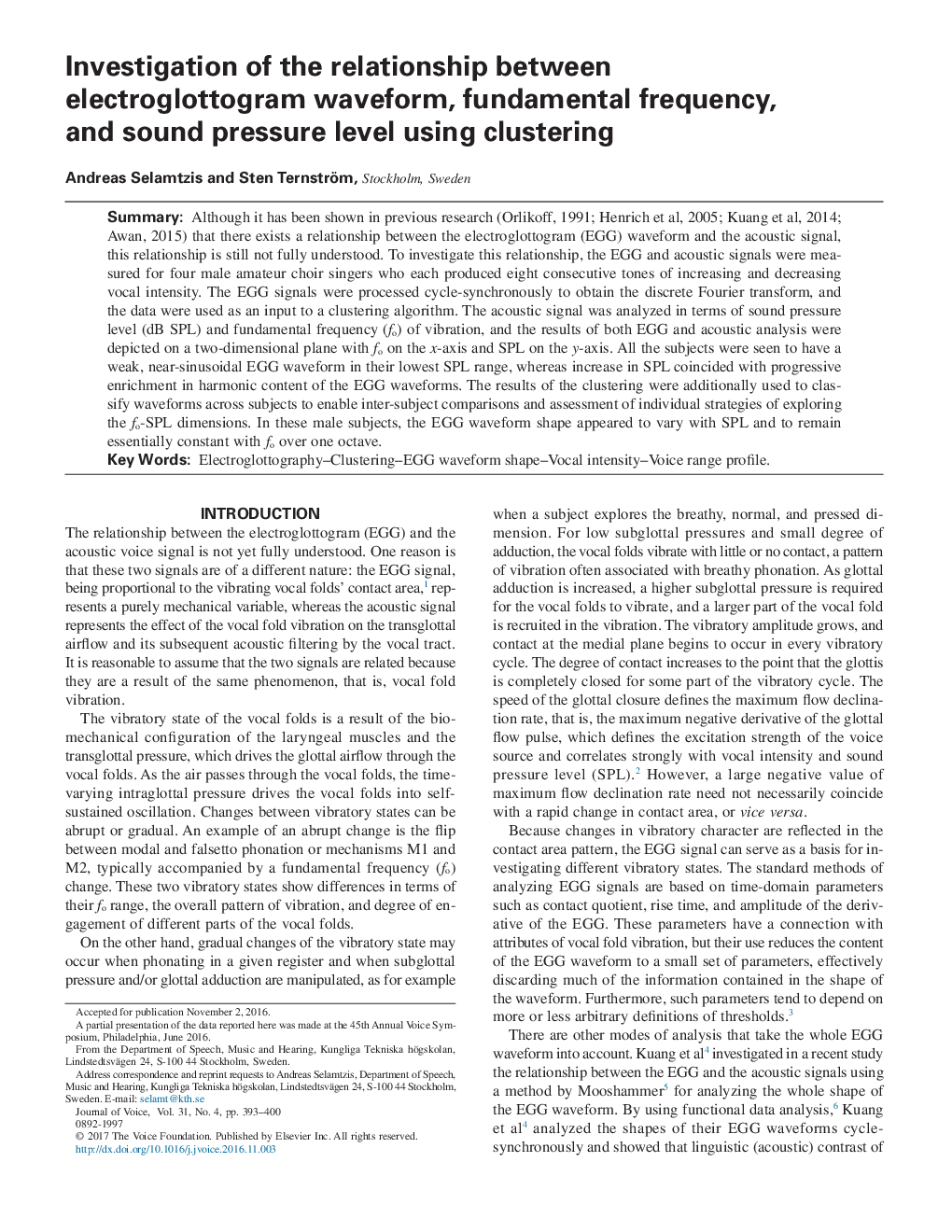| Article ID | Journal | Published Year | Pages | File Type |
|---|---|---|---|---|
| 5124160 | Journal of Voice | 2017 | 8 Pages |
SummaryAlthough it has been shown in previous research (Orlikoff, 1991; Henrich et al, 2005; Kuang et al, 2014; Awan, 2015) that there exists a relationship between the electroglottogram (EGG) waveform and the acoustic signal, this relationship is still not fully understood. To investigate this relationship, the EGG and acoustic signals were measured for four male amateur choir singers who each produced eight consecutive tones of increasing and decreasing vocal intensity. The EGG signals were processed cycle-synchronously to obtain the discrete Fourier transform, and the data were used as an input to a clustering algorithm. The acoustic signal was analyzed in terms of sound pressure level (dB SPL) and fundamental frequency (fo) of vibration, and the results of both EGG and acoustic analysis were depicted on a two-dimensional plane with fo on the x-axis and SPL on the y-axis. All the subjects were seen to have a weak, near-sinusoidal EGG waveform in their lowest SPL range, whereas increase in SPL coincided with progressive enrichment in harmonic content of the EGG waveforms. The results of the clustering were additionally used to classify waveforms across subjects to enable inter-subject comparisons and assessment of individual strategies of exploring the fo-SPL dimensions. In these male subjects, the EGG waveform shape appeared to vary with SPL and to remain essentially constant with fo over one octave.
